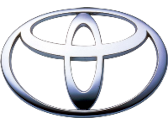How does a hybrid engine work? Structure, components and replacement
A hybrid engine consists of a combustion engine combined with an electric motor. Here, the positive characteristics of both drives complement each other. Modern hybrid vehicles make it possible to cover certain distances purely electrically. Compared to an internal combustion engine with automatic start-stop, hybrid systems consume less fuel and emit fewer environmentally harmful emissions. On the other hand, you do not have to compromise on performance and speed with a hybrid engine.
Why the hybrid engine is so popular in the automotive industry
The hybrid drive is enjoying growing popularity, both among car buyers and within the automotive industry. Hardly any carmaker today does not offer at least one model as a hybrid. There are several reasons for this. On the one hand, hybrid technology can be used to reduce pollutant emissions for a specific vehicle model, but also for the entire model fleet.
As a further advantage for the manufacturer, certain vehicles with high weight and large engine capacity can be placed on the German market despite strict regulations. The image of the car brand is also polished if there are vehicles with hybrid drive in the portfolio. In addition, tax benefits are intended to create incentives to buy hybrid cars in Germany. Therefore, manufacturers can sell their hybrid models well.
Hybrid engine advantages and disadvantages
The hybrid drive in the car offers many advantages, but is also associated with disadvantages. Lower fuel consumption is offset by a higher purchase price for the hybrid vehicle. Lower emissions of pollutants and the associated protection of the environment go hand in hand with a higher vehicle weight.
Advantages hybrid:
- Low consumption: The combined use of the electric motor and the combustion engine reduces fuel consumption. The hybrid car thus consumes less petrol or diesel.
- Electric driving: A full hybrid can be moved for a certain range with electric energy via the e-motor. The combustion engine is nevertheless available when needed.
- Environmental protection: Hybrid vehicles protect the environment because they emit fewer pollutants. As a plug-in hybrid, the car can also run on electricity generated in an environmentally friendly way.
- Driving behaviour: Since both motors run together when needed, the hybrid behaves more favourably in terms of acceleration. The electric motor delivers full torque from a standstill.
Disadvantages Hybrid:
- Complex technology: The drive by means of two power sources requires more complex technology in the hybrid car. The additional components generate costs and can break down.
- Higher vehicle price: A hybrid is often more expensive than a car with a combustion engine. This is hardly surprising, since many components have to be installed in combination.
- Higher vehicle weight: The electric motor and combustion engine in combination with the battery and control system have a lot of weight. This makes the hybrid heavier than other cars.
- Less storage space: Vehicles with hybrid drive sometimes offer less loading space or have a step in the boot. This is where the battery, which is needed for the drive, finds its place.
How hybrid and plug-in hybrid work
A hybrid vehicle uses several types of drive sources in combination. In the car, an internal combustion engine for petrol or an internal combustion engine for diesel is combined with an electric drive. Depending on the driving situation and the respective requirements, only one engine or both engines run together. In a hybrid, the energy for the electric motor is stored in a battery. With the plug-in hybrid, it is also possible to charge the battery externally to increase the electric range.
This is how the energy is generated in the hybrid vehicle
The vehicle itself generates the electricity for the electric motor and for charging the battery. Depending on the design of the drive, this is done via a generator coupled to the combustion engine or in some other way. A mild hybrid uses a special starter-generator. This charges the battery and makes its power available for the drive as needed. Energy is also generated by energy recovery during braking and fed into the battery.
The most important components of the hybrid drive
The drive system of modern hybrid vehicles is made up of numerous components. Some, such as the combustion engine, are found in every conventional car, others are specifically reserved for the hybrid.
Combustion engine
Regardless of whether mild hybrid or plug-in hybrid, the combustion engine continues to form the heart of the drive. In a hybrid, the combustion engine can be operated at optimum efficiency, just like the petrol engine. A lot of power despite low engine output is thus possible.
Electric motor
Another important part of the drive system of hybrid vehicles is the electric motor. Depending on the design of the hybrid drive, it can also power the vehicle on its own. In a mild hybrid, the electric motor also functions as a generator.
Battery
The battery of the hybrid system stores the electricity generated by the generator or during braking. When needed, the electrical energy is available to drive the electric motor.
Control unit
A hybrid car has more control units than a pure combustion engine. These control the charging of the battery and monitor the battery power. The power control unit functions here as an energy converter and link between the battery and the electric motor.
What to consider when buying hybrid engines in exchange
Hybrid engines, like any engine, are subject to wear and tear and can break down due to various causes. Instead of an extensive repair, it may be worthwhile to replace the defective engine with a replacement engine from a car recycling centre. When buying used hybrid engines, however, some points should be taken into account.
Hybrid drives differ in their design depending on the manufacturer and vehicle model. Some variants have an electric motor flanged to the petrol engine. In other hybrid drives, the electric motor is integrated into the transmission. Still other variants rely on external electric drives on the rear axle. Therefore, when buying a hybrid engine, pay attention to which components are included as part of the offer.
Choosing the right hybrid engine
In addition to the scope of delivery and the selection of the right components, the condition of the hybrid engine and the correct engine type must also be taken into account. The condition of the engine can often be assessed on the basis of the information provided by the supplier and the mileage to date. Photos of the unit on offer also often allow conclusions to be drawn about its condition.
The engines installed in hybrid cars can also differ within a model series. In order to find a suitable replacement drive, information such as the engine number or the manufacturer’s engine code is particularly helpful. It is also often possible to find out which hybrid engine is installed in the vehicle with the help of the chassis number or the key numbers in the vehicle registration document.



















_logo.png)























_logo.png)









































_logo.png)

































